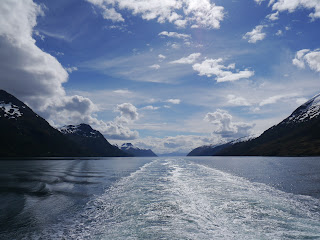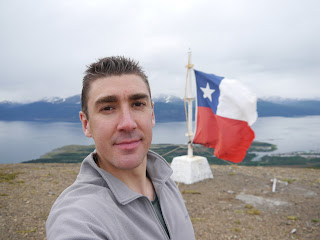For a full complement of photos use the following link to the corresponding set in Flickr account:
http://www.flickr.com/photos/67212524@N04/sets/72157628654248523/
My time on Ilha de Santa Catarina was my first beach experience during my South American adventure - how different to the ice fields of southern Patagonia! While relaxing on the beaches there I felt like I had arrived in Brazil. Ilha de Santa Caterina is a large island in southern Brazil. The city of Florianópolis is located where the island almost links with the mainland. I chose to stay in the south of the island which is less developed and was happy with this choice because the area was chilled with friendly people and much quieter beaches. I stayed in a hostel right on the beach in the small town (village really) of Pântano do Sul.
The Beach at Pântano do Sul
During my time there it was great to feel so refreshed by swimming in the sea every day. Some highlights of my stay are:
A walk from Pântano do Sul across a rocky headland to the beach at Lagoinha do Leste (which can only be reached this way or by boat). On this beach I did some body surfing.
A visit to the Parque da Lagoa do Peri (a lake) for a short walk through woodland with large bamboo plants and a swim in the lake.
An afternoon near the beach at Joaquina where there are sand dunes so large people snowboard down them (a great place for photos).
The Sand Dunes Near the Beach at Joaquina
The most memorable day for me was a trip on a boat from Armaçao to Ilha do Campeche. This small island is protected (for it´s wildlife and some ancient archaeological features such as stone carvings cut into the rocks 5,000 years ago). The beach on the island is idyllic with crystal clear water, yellowy white sands, palm trees and charming rock features - possibly the most beautiful beach I have ever been on (though I´m sure South America will deliver more).
The Beach on Ilha do Campeche
One fun night, the beach bar owned by the hostel proprietors had a group of local musicians playing Brazilian folk songs. They were a very friendly bunch and made me feel welcome. One of them played an instrument called a cuíca. This is like a drum with a skin pulled taught at one end of a cylinder. Attached to the inside of the skin in it´s centre is a thin piece of straight bamboo. With one hand inside the instrument the musician slides a piece of wire wool up and down the bamboo to excite it. The resulting vibrations resonate in the cylinder. The instrument is essentially two-tone as the musician can create two pitches - one without touching the outside of the skin with a finger of his free hand and another (higher-pitched) sound by pressing down on the outside of the skin. A classic sound this makes is ´ooo-eh-ooo-ooo-eh´ and is a classic Latin-American / Brazilian sound which is present on many of the latin-influenced house records I like. It was great to actually view one of these instruments in action that I have heard so many times but never actually seen.




























